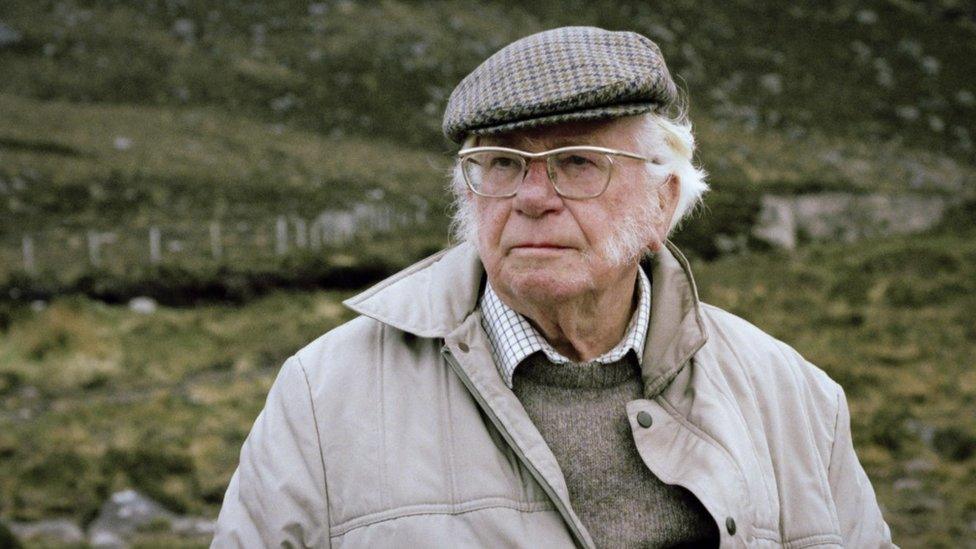'Unseen' Alfred Wainwright items go on show
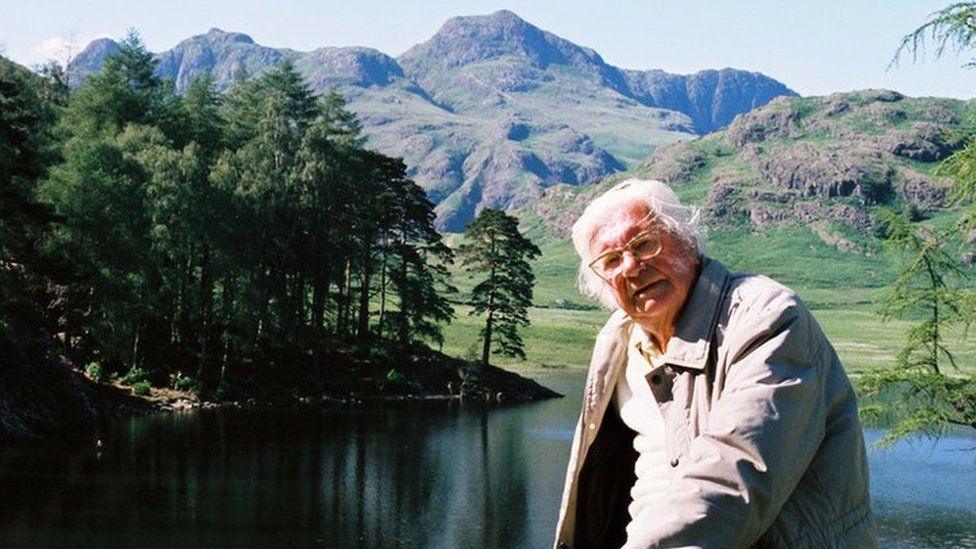
Alfred Wainwright became synonymous with the Lake District
- Published
Never-before-seen items belonging to walker and writer Alfred Wainwright are going on show in the Lake District ahead of the 70th anniversary of his first book.
A previously unpublished photograph of Wainwright and two copper printing plates will be displayed at The Armitt museum in Ambleside as part of an exhibition opening later.
The event will also showcase artwork, book printing negatives and a manuscript, as well as objects he owned and used.
Wainwright wrote and illustrated seven guides to the Lakeland fells, which have gone on to sell more than two million copies.
Wainwright archivist and exhibition co-curator Chris Butterfield said it "celebrates the extraordinary contribution to Cumbrian literary and cultural history" made by the famously taciturn writer.
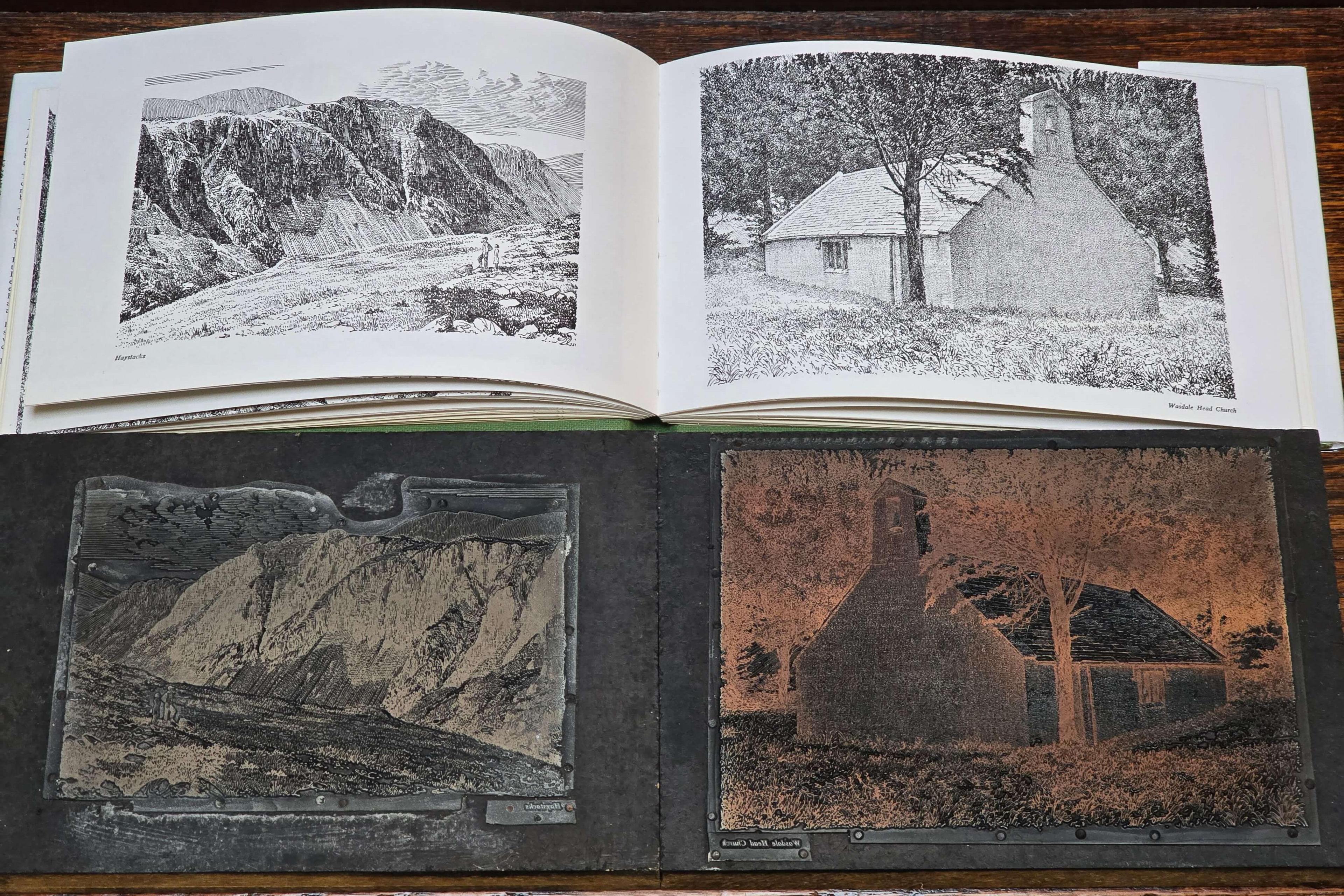
Two copper plates used by Wainwright to produce his 1966 Fellwanderer publication are previously unseen
The Armitt's manager and curator Faye Morrissey said Ambleside held "special significance in Wainwright's story" as the writer began the fieldwork for his first book in the area in 1952 as he detailed a route to Dove Crag.
She described Wainwright as "such an important individual for the Lakes", adding "the timing of the exhibition makes it even more appropriate to acknowledge his legacy here in Ambleside".
The exhibition will run until December.
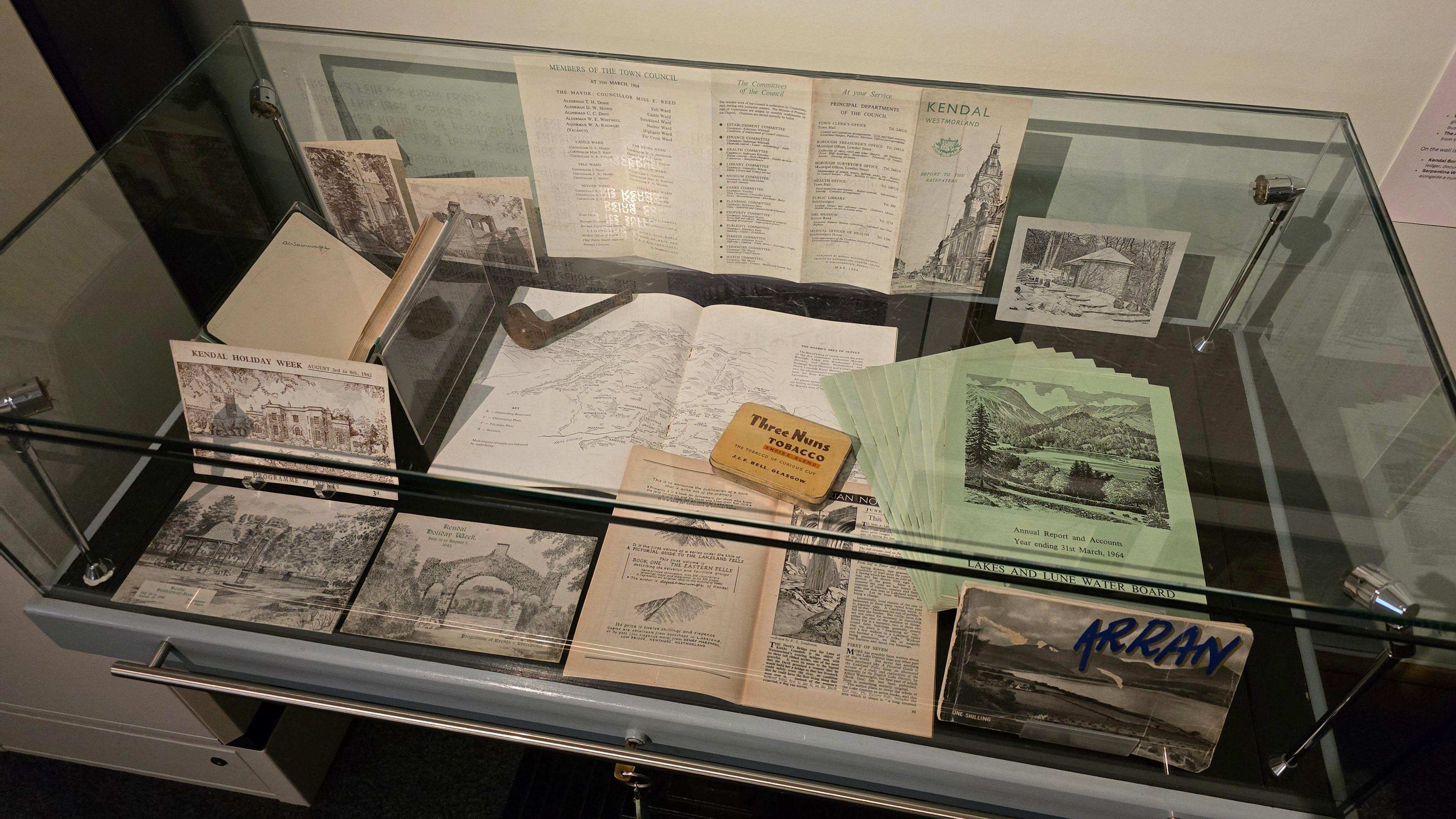
The exhibition includes a number of Wainwright's drawings, as well as personal items
Having been raised in poverty amid Blackburn's cotton mills in the early 20th Century, the lakes and their wide-open vistas captured Wainwright's heart.
He spent several years making weekend bus journeys from his then-home in Kendal, making pen-line drawings of more than 200 hills and mountains, as well as handwriting descriptions for each one.
His first book, which focused on the Eastern fells, was published in May 1955.
He combined his exploring with his day job as borough treasurer of Kendal, obsessively spending his evenings writing up notes gleaned from his Saturday and Sunday trips.
It was, he told Radio 4's Desert Island Discs in 1988, something he took on "more for my amusement than anything else".
"It ended finally," he went on to say, "with my [first] wife walking out and taking the dog, and I never saw her again".
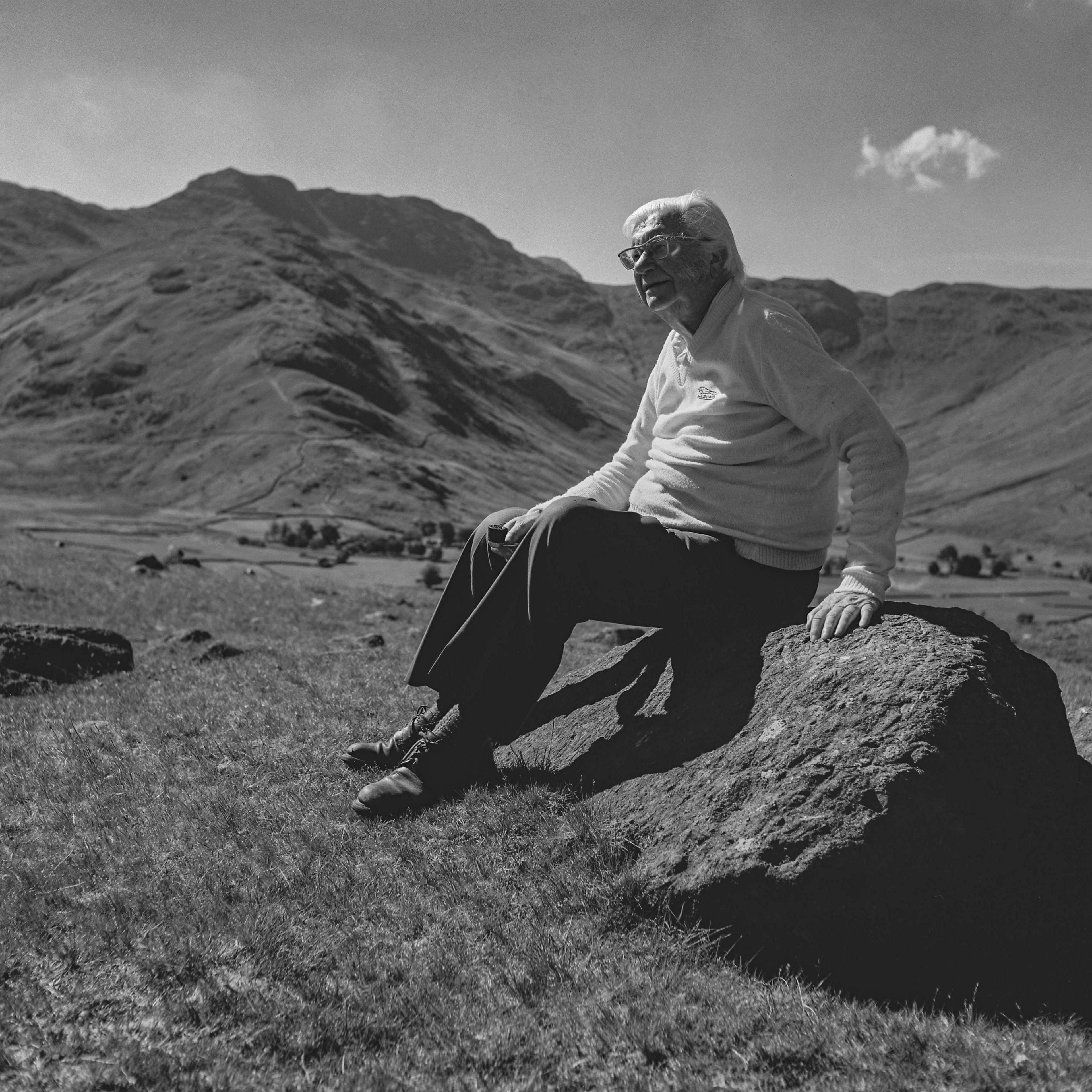
This image of Wainwright, taken by Ken Shepherd, is another previously unseen item
Upon completion of his pictorial guides to the fells, Wainwright wrote other books including titles on the Pennine Way.
He also devised a west-east coast-to-coast route and found new generations of fans in the 1980s when he starred in three BBC series focusing on his walks.
He died in January 1991 with his ashes scattered in the Lake District at his favourite spot, Innominate Tarn, near the summit of Haystacks.
Follow BBC Cumbria on X, external, Facebook, external, Nextdoor and Instagram, external. Send your story ideas here, external.
Related topics
- Published30 October 2023
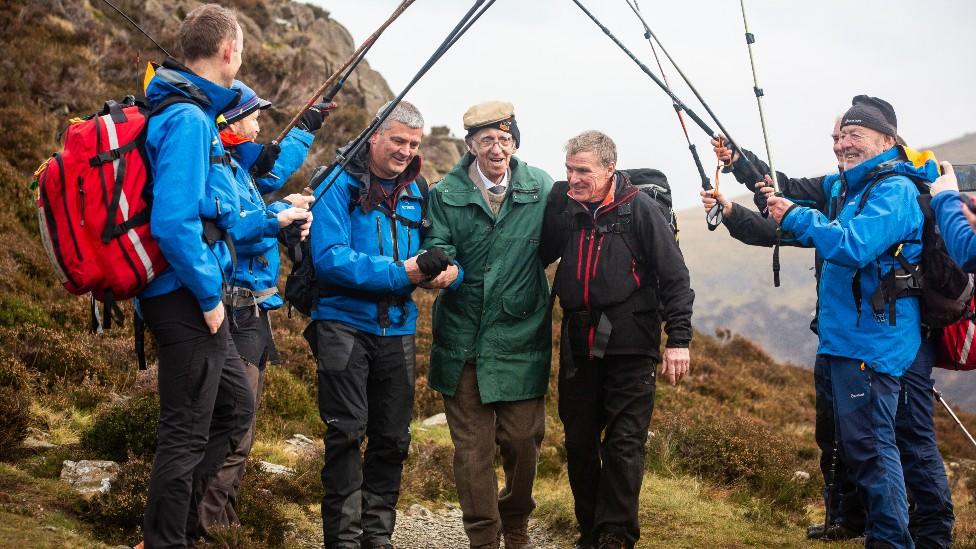
- Published5 September 2021
